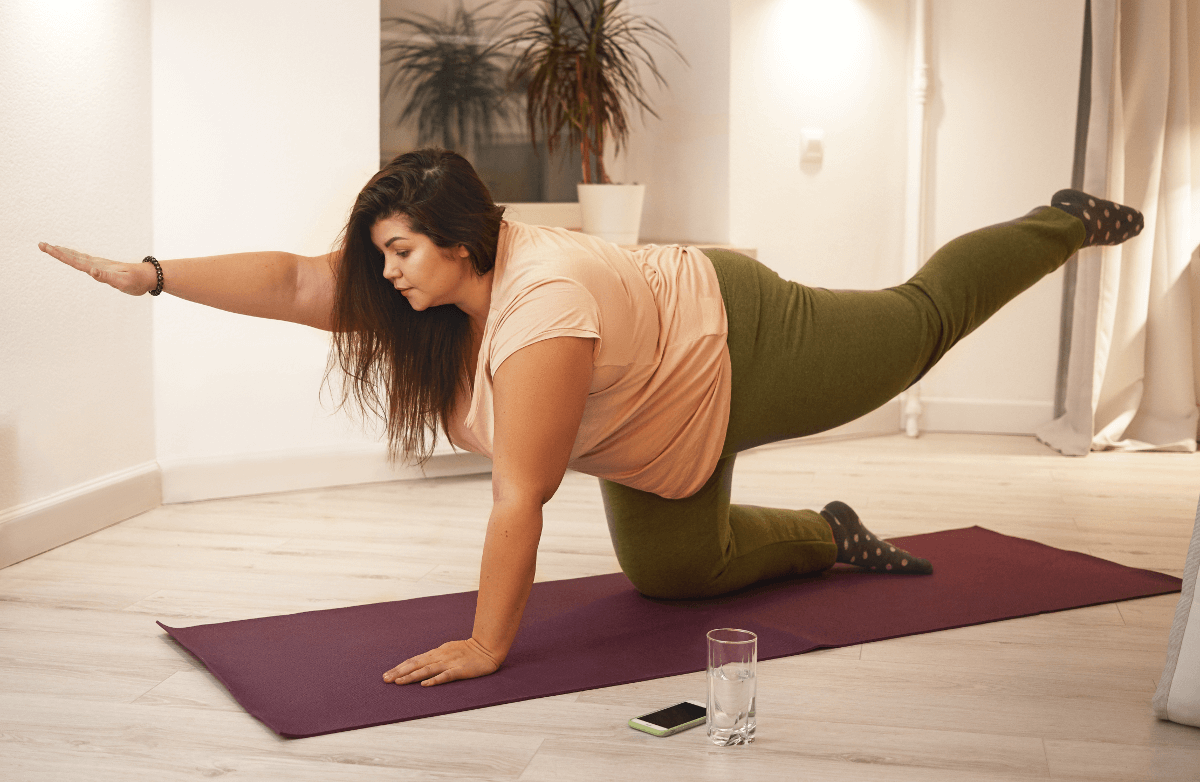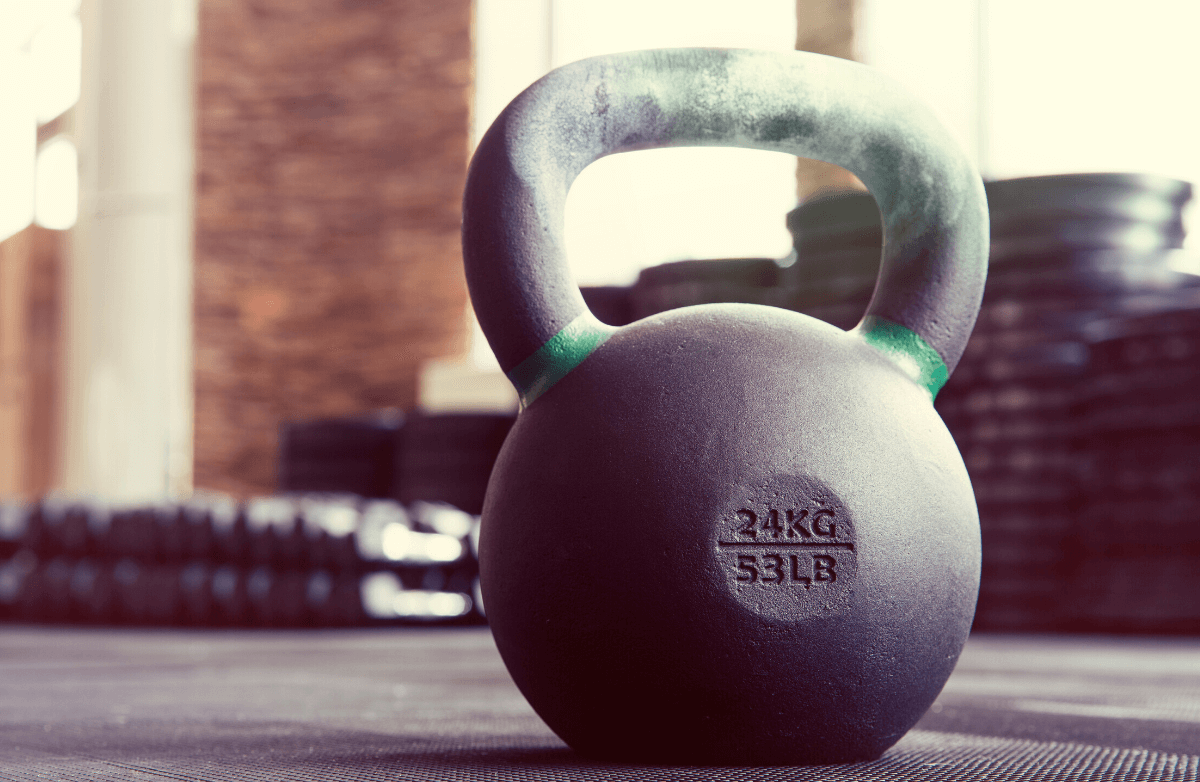Turns out, I'm not alone in my
"
The brainchild of physiologist and fitness-enthusiast Ellen Latham, M.S., Orangetheory is a 60-minute, five-zone, interval-based workout specifically designed to push your heart rate to the desired "orange" zone, which equates to 84 percent or higher of your individual maximum heart rate, according to the website. Participants wear a heart rate monitor throughout the class and strive to spend 12 to 20 minutes
Hit those magic numbers and the result is the "Orange Effect—more energy, visible toning and extra calorie burn for up to 36 hours post-workout," according to the website. Based on the physiological theory known as Excess Post-Exercise Oxygen Consumption, or EPOC, that post-workout Orange Effect occurs because of an "oxygen debt." Put simply: Your body continues to require a higher rate of oxygen after maxing out with cardiovascular and strength training, meaning you continue burning calories long after you leave the studio.
The orange theory goes beyond just your effort level. "Orange is the color for energy!" Whitehead says. "When you walk into an Orangetheory studio, you will see plenty of orange [because] we want you to feel energized and ready to work out. The studio lighting is also dimmed and tinted orange to create the same effect."
Going All Out for the Orange Zone
After strapping on a heart rate monitor, each class is split evenly between the treadmills and either the rowers or the floor area. A coach will talk each group through the instructions for each interval, reminding everyone of their remaining time for each section and motivating athletes to push themselves to the appropriate five-zone range.
"During a one-hour session, members can expect an intense workout, but Orangetheory is completely designed to allow each individual to work at their own pace," Whitehead says. "
Most workouts include nearly 30 minutes of work on the treadmill, though there are also run-row combination workouts as well. Each treadmill has a chart detailing three fitness levels—power walkers, joggers and runners—which coaches refer to as they explain your incline and speed for each interval. As anyone who teased me about my short stride in middle school will tell you, running has never been my forte, but in my first session and every one thereafter I found myself pushing hard to make it to the end of each all-out interval, even as I saw my heart rate skyrocketing on the OTBeat board. Intervals range from just 30 seconds to three minutes and a brief walking recovery follows every all-out interval. That, coupled with the fast beats of the day's music, inspires feelings of strength and determination to push all the way to the end of your treadmill section.
The floor section features a range of two to three move circuits, often broken up by distance rows or plyometric moves to keep the heart rate up. My first class featured jump squats using the TRX bands followed by a 250 meter row, then Arnold presses followed by a 150 meter row before repeating the set of four. In addition to the coach performing examples of each exercise, video screens in the floor area also feature GIFs on a loop, just in case you forget the moves or repetitions. Whether you love or loathe strength training, one thing is for sure: With a new lineup of exercises, muscles worked and equipment used each class, you'll never be bored.
.png) Following each class, you'll receive an emailed performance summary, detailing the number of minutes you spent in that highly desired orange zone, time of the workout, statistics about your heart rate throughout the class and your estimated calories burned. For women, the average calorie burn is between 500 and 700 calories during the one-hour session, while men typically burn around 800 to 1,000 calories.
Following each class, you'll receive an emailed performance summary, detailing the number of minutes you spent in that highly desired orange zone, time of the workout, statistics about your heart rate throughout the class and your estimated calories burned. For women, the average calorie burn is between 500 and 700 calories during the one-hour session, while men typically burn around 800 to 1,000 calories.Perhaps it was the bumping Top 40 beats or the three enthusiastic guys shouting "You got this, bro!" and "Come on, man, get it!" throughout the workout or the fact that I saw our coach getting down with some "Hotline Bling" moves after explaining the second block to the floor group, but something about the hour you spend in the orange glow is empowering, sweaty and, dare I say, fun? Suffice it to say, I plan on drinking the orange Kool-Aid twice a week for the foreseeable future.
Terms You'll Hear If You Go
- Base: This should be a comfortable pace based on your level of fitness. The base pace allows for conversation during the workout and your heart rate should remain in the green zone.
- Push: This is a more challenging pace, with trainers recommending that you aim for an eight out of 10 effort level. Exercisers will likely hit the orange zone during these times.
- All Out: Give it everything you've got. These short bursts of effort are always followed by an active recovery period, so push yourself to your max.
- Splat Points: Refers to the number of minutes you spend in the orange and red zones.
- BPM: Beats per minute. The statistic is displayed on monitors around the studio for reference.
- OTBeat Board: Monitors that are displayed around the studio featuring every athlete's statistics, including his or her BPM, estimated calories burned and splat points. Your personal block changes color to reflect where your current heart rate level resides.













